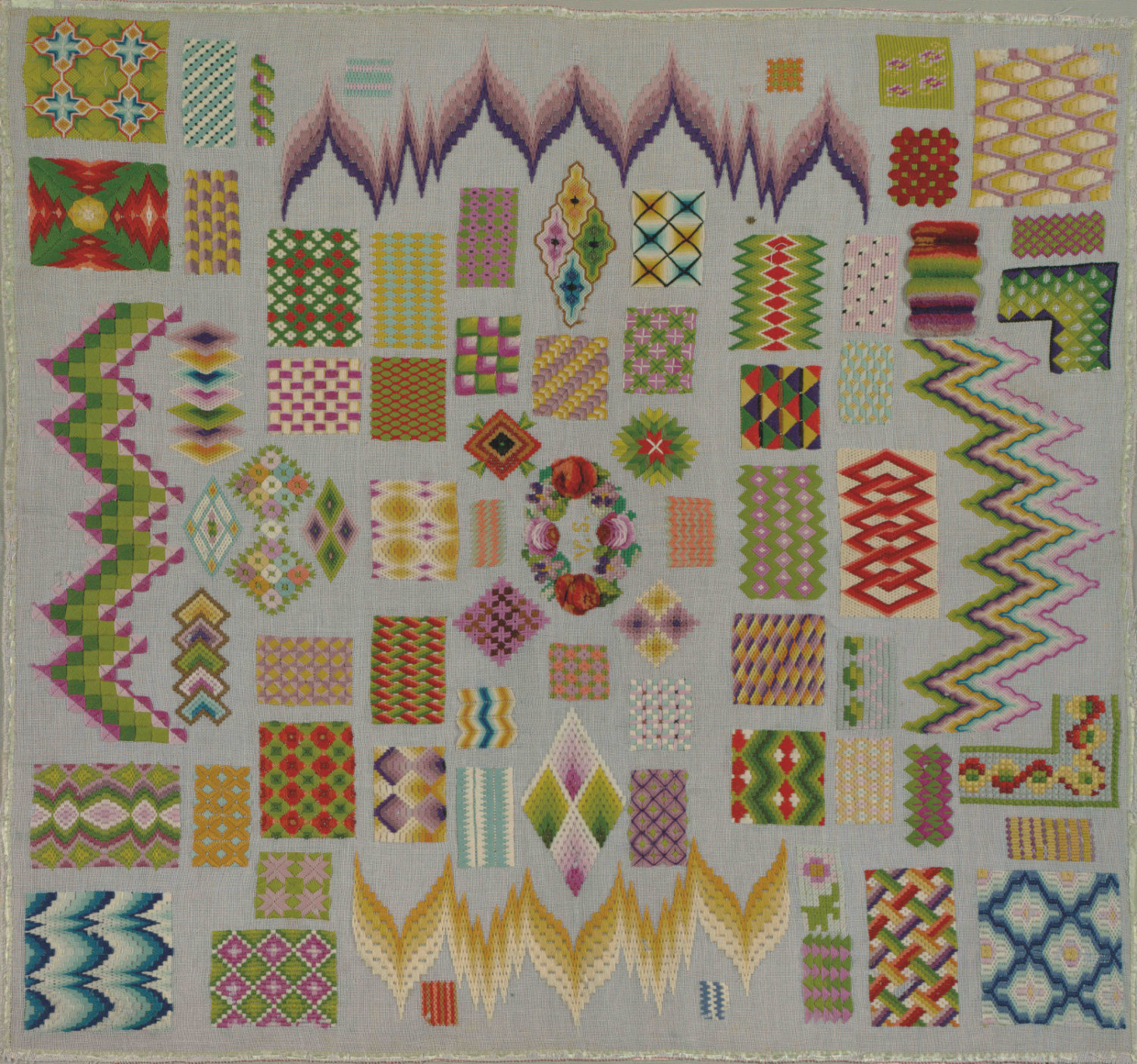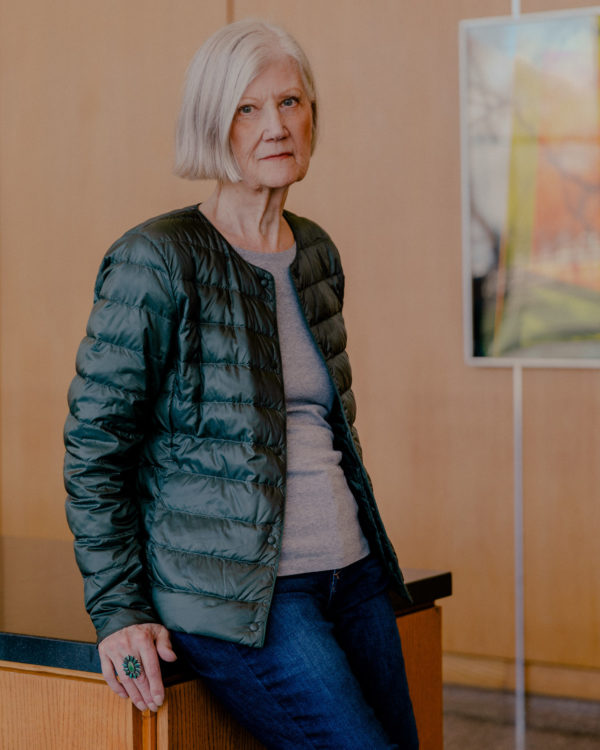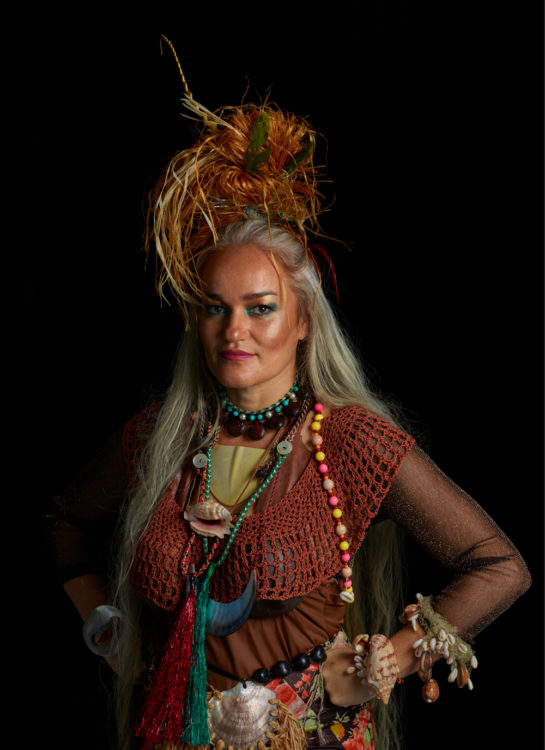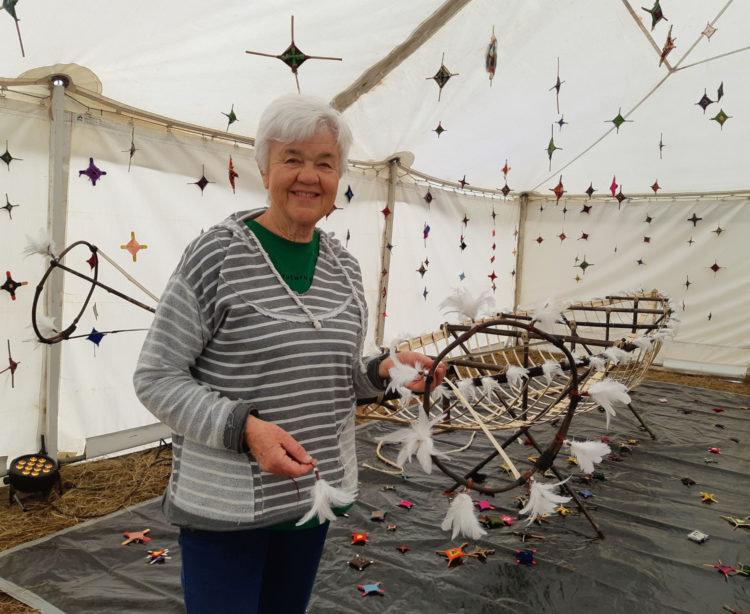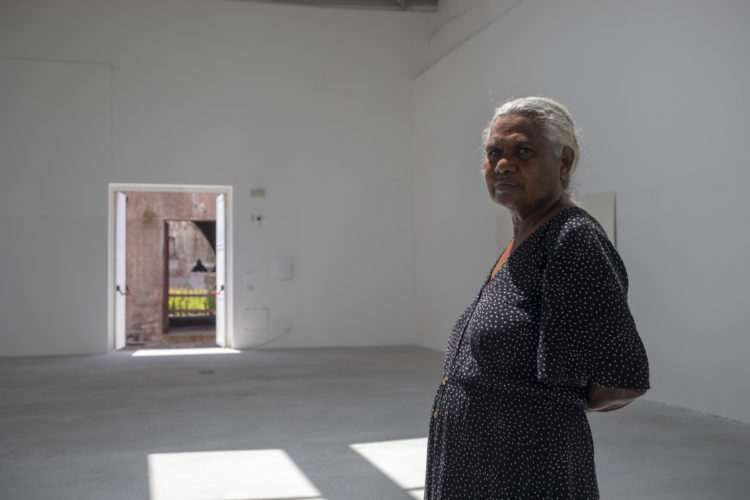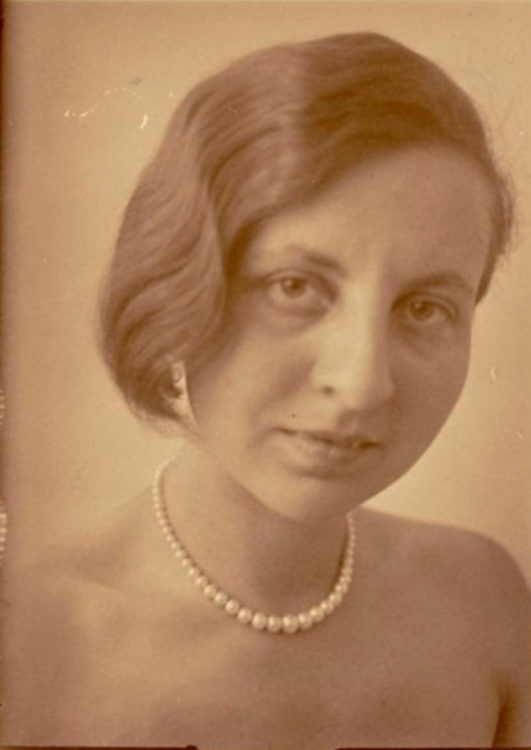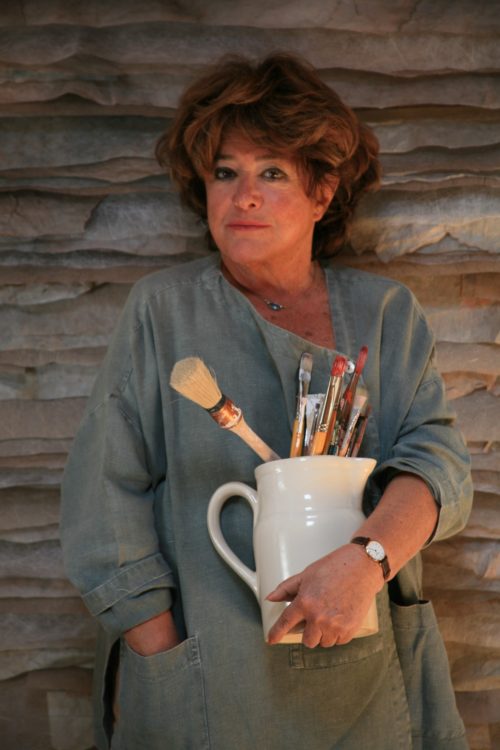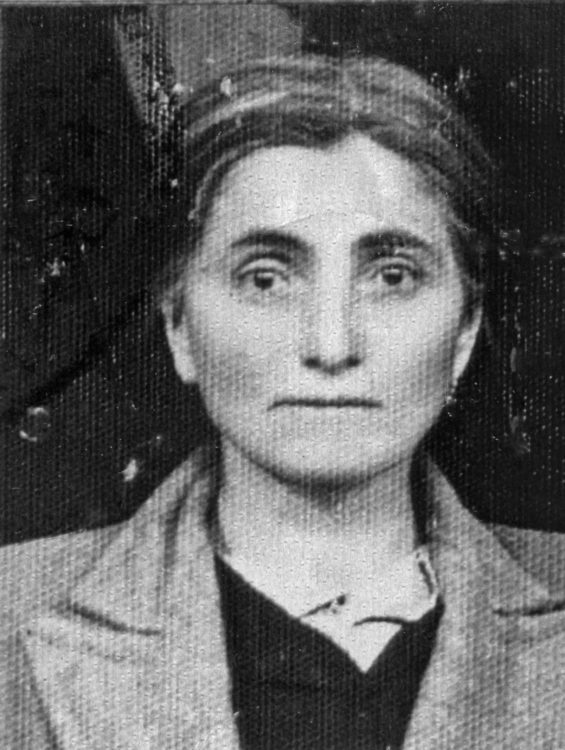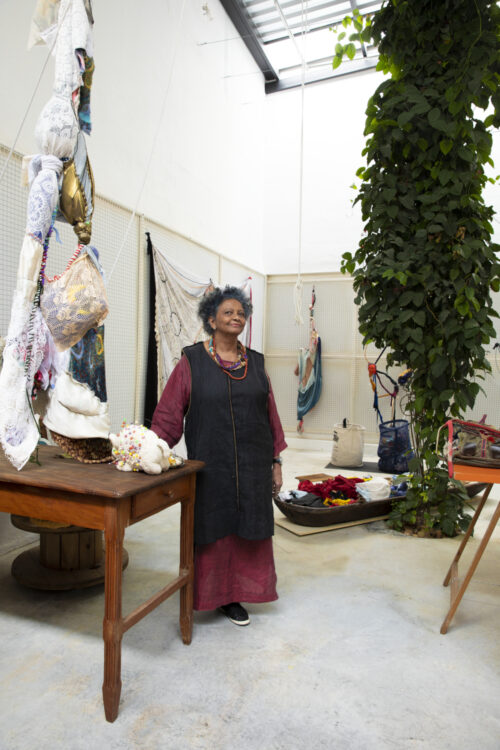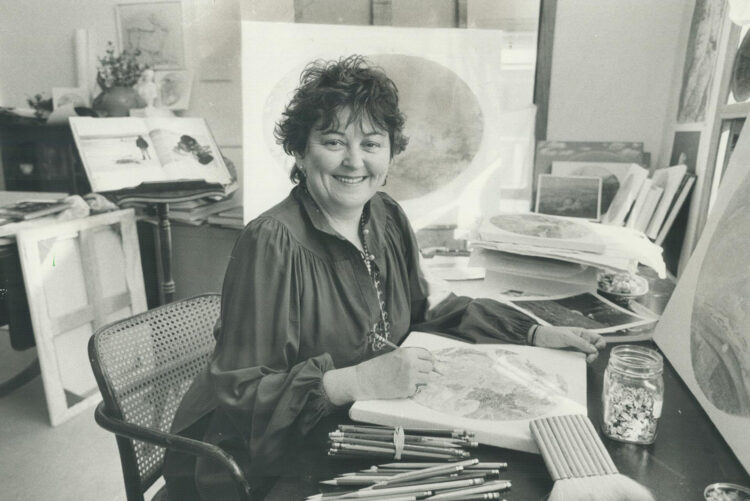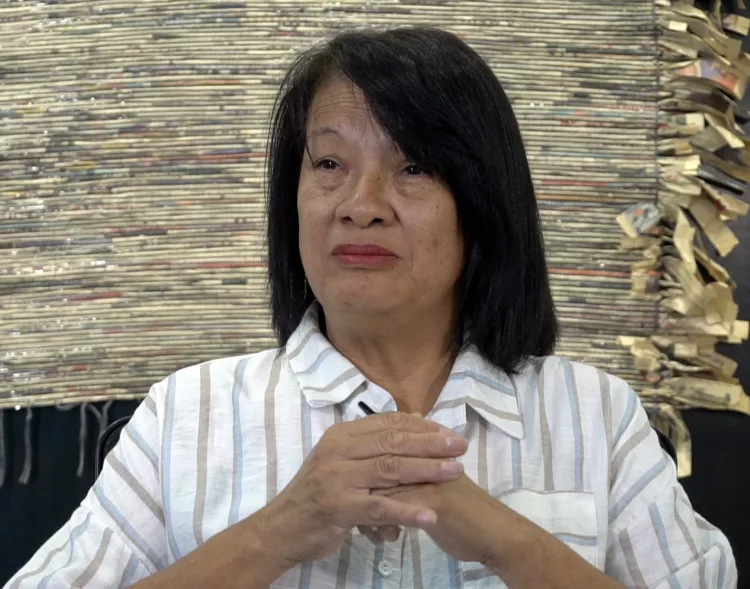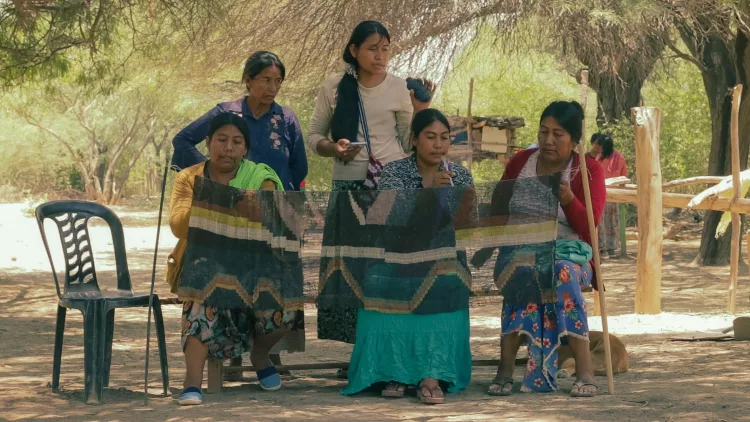Review
Amostra de pontos de bordado Berlin Wool Work [Sample of Berlin Wool Work embroidery stitches], 19th century, wool on cotton fabric, 81 x 74 cm, Collection Museu de Arte de São Paulo Assis Chateaubriand
This exhibition presents paintings by Western women from the seventeenth to nineteenth centuries alongside tapestries, embroideries, and textile compositions from countries such as Indonesia, Egypt, and Brazil and spanning Antiquity to the twentieth century. True to the aim of Lina Bo Bardi, founder of the Museu de Arte de São Paulo Assis Chateaubriand, who wanted to abolish boundaries between modern and popular art and question the Eurocentrism of fine arts museums, this unexpected and at times incongruous juxtaposition has the merit of challenging all kinds of hierarchies.
The “anonymous” label used to designate the creators of these fabric pieces can be found throughout the exhibition, reminding us that outside the countries where the history of painting was being written, women were inventing other forms of art, the abstract beauty of which often speaks more to our contemporary vision their counterparts’ paintings.
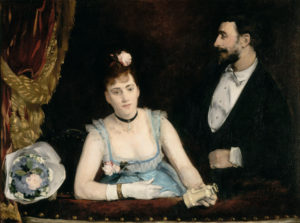
Eva Gonzalès, Une loge aux Italiens, 1874, oil on canvas, 98 x 130 cm, © Musée d’Orsay, dist. RMN-Grand Palais / Hervé Lewandowski
Most of the women painters whose works are shown alongside these anonymous craftspeople have become heroines in art history: Artemisia Gentileschi (1593-1653) opens the exhibition with her monumental Cleopatra (circa 1620), alongside Sofonisba Anguissola (1532-1625) and her sharp-eyed miniature portrait (1558), on loan from the Custodia Foundation in Paris. Other artists include Clara Peeters (1594-1657); Élisabeth Vigée-Lebrun (1755-1842) and her famous Autoportrait au chapeau de paille (1782), which mirrors Pierre Paul Rubens’ portrait of Suzanne Fourment; Mary Cassatt (1844-1926); and Eva Gonzalès (1849-1883) The latter’s majestic Une loge aux Italiens (circa 1874), on loan from the Musée d’Orsay, is flanked by vigorous portraits of women by Marie Bashkirtseff (1858-1884) and Anna Bilińska-Bohdanowicz (1857-1893). These paintings round off the exhibit with a compelling display of how women became producers of a new vision, and are presented facing geometric patchworks made around the same period.
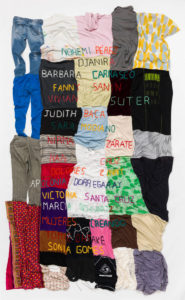
Carolina Caycedo, Mujeres en mi [Women in me], 2010, clothes and embroidery, 365 x 180 cm, Private collection, © Photo: Thais Llorca
The tour continues on the lower floor with a selection of contemporary feminist artists. A totemic triptych by Carolina Caycedo (b. 1978), a Colombian-born visual artist living in Los Angeles, merges pictorial and textile art in a piece made from used clothes carefully chosen for their social, political, plastic, and sentimental qualities. They belonged to the artist’s friends and relatives, including her grandmother and her mother who died at a young age. C. Caycedo sews the clothes together in such a way that the finished piece can still be worn during performances, assembling them and embroidering them with the names of women she admires. Among other pieces exhibited are textile pictures of transgender artist Tuesday Smillie (b. 1981), both violent and delicate in tone, midway between militant banners and sophisticated compositions. Also notable is About: The Blank Pages (2014), an installation by EvaMarie Lindahl (b. 1976) and Ditte Ejlerskov (b. 1982) in which two bookshelves carry small, made-up monographs that one wishes were real. Created in the style of Taschen’s “Basic Art Series”, these invented books on Niki de Saint Phalle, Lee Krasner, Paula Rego, Carolee Schneemann, Elisabetta Sirani, Cecilia Beaux, Rosa Bonheur, and Paula Modersohn-Becker are mixed in with already existing Taschen titles, which are mostly devoted to men.

EvaMarie Lindahl and Ditte Ejlerskov, About: The Blank Pages, 2014, books, bookshelves and posters, © EvaMarie Lindahl and Ditte Ejlerskov
The exhibition extends into the permanent collection, which opens with Jean Auguste Dominique Ingres’ odalisque hijacked by the Guerrilla Girls. Barely more than 6% of works exhibited in 2017 were by women, but the percentage is increasing rapidly following two years of bold curatorial choices which focus on women artists, in reaction to a political context ill-inclined toward feminism in Brazil.
Histórias das Mulheres: Artistas até 1900, and Histórias Feministas: Artistas depois de 2000, from 23 August to 17 November 2019, Museu de Arte de São Paulo Assis Chateaubriand (MASP) (São Paulo, Brazil).
Leïla Jarbouai, "Weavers, painters and feminists in São Paulo." In Archives of Women Artists, Research and Exhibitions magazine, . URL : https://awarewomenartists.com/en/magazine/tisserandes-peintres-et-feministes-a-sao-paulo/. Accessed 7 December 2025
